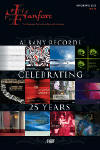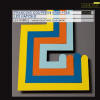Texte paru dans: / Appeared in:

Fanfare Magazine: 36:4 (03-04/2013)
Pour
s'abonner / Subscription information
Les abonnés à Fanfare Magazine ont accès aux archives du
magazine sur internet.
Subscribers to Fanfare Magazine have access to the archives of the magazine
on the net.
Ambronay
AMY035

3760135100354 (ID274)
Three of the four suites from Les Nations began life as Corelli-influenced sonades relatively early in their composer’s career, during the 1690s. Relabeled as overtures in the 1720s, Couperin added to each a typically French suite of dances, so that L’Astrée became La Piémontoise, La Pucelle became La Françoise, and La Visionnaire became L’Espagnole. (L’Impériale was newly composed.) The overarching title of Les Nations was thus a reference to the arbitrarily chosen title of each suite, but also a subtler, punning nod to their fusion of Italian and French forms and content: Les Goûts réunis. Far from being a series of awkward, baroque Push-Me-Pull-Yous, the four works found their own internal, structural balance through the breadth of technique that informed their development, and the inspiration of one of the period’s finest composers. If you haven’t heard these suites yet, you owe it to yourself to do so.
As for the musicians: Les Ombres is a flexible ensemble founded in 2006, and devoted to 17th- and 18th-century music in historically informed performances. Its core consists of three performers, but this album features 12, including a pair of flautists, two oboists, and a bassoonist, as well as strings, bowed and plucked, and keyboards. Not all play at once, but as few as four and as many as double that can be heard in any given dance movement or overture. Their playing is crisp, and tempos varied. Good accenting brings the dance element in such pieces as La Françoise’s gigue to the fore, without any binding of phrases stiffly to the beat. I find their application of color piquant, though at times—as in the vivement second movement of the L’Espagnole overture—it leaves the realm of intimate music-making for something closer to the timbre and balance of a reduced French baroque wind band. Ornamentation is delicate, and sensibly chosen to fit individual pieces.
It should also be noted that Les Ombres’ strings perform without any vibrato, even for coloration. Now, I don’t care especially one way or the other about this as long as the musicians in question possess attractive tone without falling back upon the artificial enhancement of a cathedral-like ambiance. The three violinists and the gambist heard on this album all manage this reasonably well. But if you’re avoiding vibrato because you want to be authentic, then it should be kept in mind that the influential gambist-composer Jean Rousseau, born just 24 years before Couperin, pointedly endorsed in print both a pronounced vibrato as ornamentation, and what he termed a normal vibrato “in all contexts where the length of the note permits.” So an absence of vibrato in this music can be viewed as an acceptable personal choice, given the breadth of acceptable baroque performance practice—which was much greater at the time than some moderns allow it to have possessed—but not a badge of authenticity.
The competition is strong for recordings that feature all four suites. Wentz/Musica Ad Rhenum (Brilliant Classics 92178) offers an increased string section, and has the advantage of offering all the ensemble-based chamber music at a budget price, but they take slow movements at too fast a clip for my taste. This is something Les Ombres avoids. My own preferences remain with the Purcell Quartet (Chaconne 0684, 0729), to a large degree because of the greater transparency achieved among its four musicians, and the resultant clarity among the parts. The Kuijken Ensemble (currently on Accent 928586) is perhaps best viewed in some respect as combining some of the color of Les Ombres, with the part-transparency of the Purcells, while being never less than authoritative. In short, you really can’t lose with any of these versions, and Les Ombres is both distinctive, and as distinguished as the rest.
Cliquez l'un ou l'autre
bouton pour découvrir bien d'autres critiques de CD
Click either button for many other reviews


